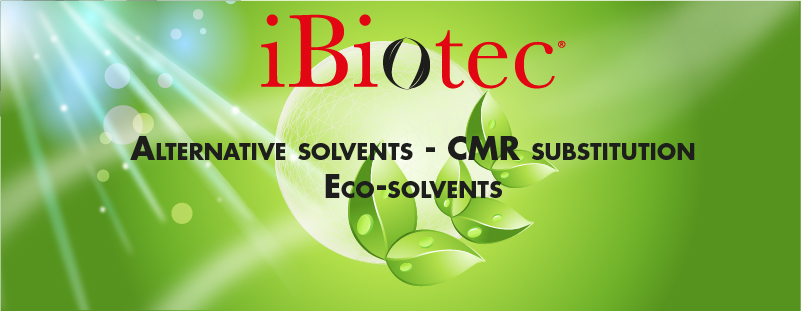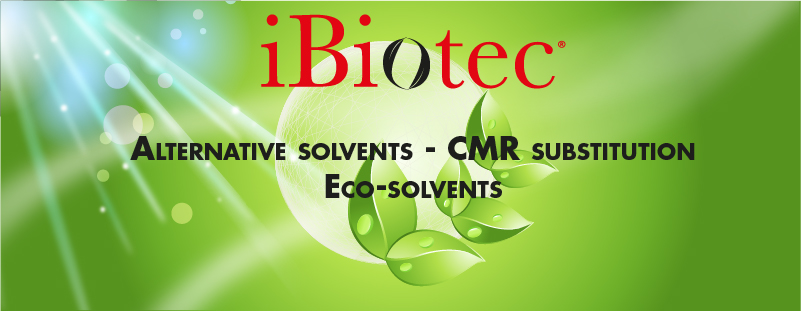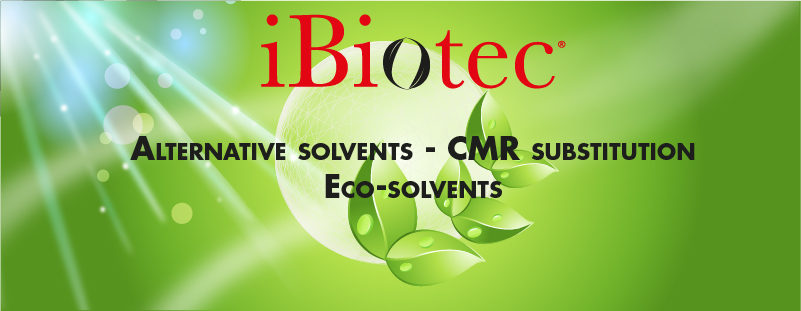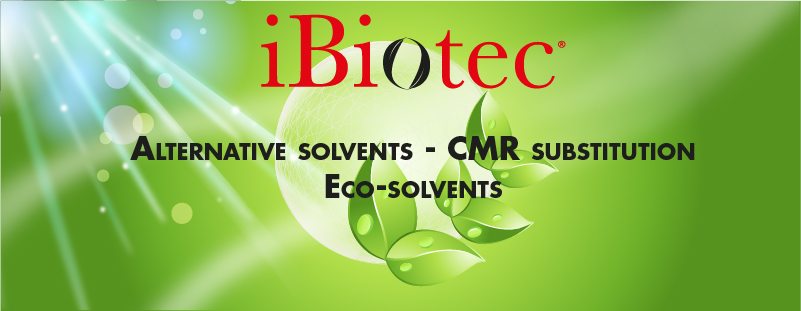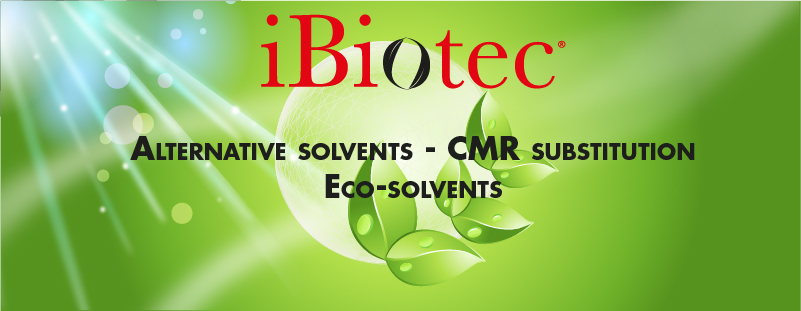RETENTION
(Obligation to put or not to put)
Retention
REGULATORY CONTEXT
The obligation to store or not to store in retention is subject to two regulations:
- Labour code - Article R4412 prevention of chemical risk applicable to labelled products.
- ICPE code of the environment, law of July 19, 1976 which specifies "Any storage of a liquid likely to create water or soil pollution must be associated with its retention capacity"
Pollution risk
Refer to the chapter on water or soil pollution
Finding a degreasing solvent without retention obligation
Refer to the chapter finding a manufacturer by application
__________________________________________________
SOLVENT MANAGEMENT PLAN
Solvent management plan SMP
REGULATORY CONTEXT
- The solvent management plan (SMP) is a material input / solvent output status for an installation. By installation, we mean an industrial site. Its objective is to assess the total emissions (channelled and diffused) or diffused of volatile organic compounds (VOCs) in order to verify compliance with emission limits.
Reagents and fuels are not considered in the SMP. Solvents used as fuels and industrial waste are considered.
- Ministerial decree of February 02, 1998, Article 28/1 (arr. May 29, 2000, art. 3)
"Any operator of a facility consuming more than one tonne of solvent per year must implement a solvent management plan (SMP). This plan is kept available to the inspection of classified establishments ".
If the annual solvent consumption of the installation is greater than 30 tonnes per year, the operator sends the solvent management plan annually to the inspection of classified establishments and informs them of actions to reduce consumption.
__________________________________________________
VOC volatile organic compounds (emissions)
Reduction of volatile organic compounds (VOC)
REGULATORY CONTEXT
French regulations relating to the reduction of VOC emissions are currently part of the framework of the ICPE regulations of June 1, 2015, SEVESO III. Industrial establishments falling within the scope of nomenclature 4330 are obliged to establish an SMP (solvent management plan) to reduce their VOC emissions.
It therefore applies to any industrial company storing or using more than 1 ton of flammable solvents.
Definition of a VOC
Compound that can be found in gaseous form in the atmosphere causing direct or indirect impacts on animals or nature.
Methane is not considered VOC because there is no direct impact on health. The term VOC should be NMVOC (non-methane VOC). Methane is nevertheless a greenhouse gas.
Any organic substance or mixture, which is in gaseous state or that evaporates easily under conventional conditions of temperature and pressure when used is therefore a VOC. Solvents are therefore primarily concerned if they have a vapour pressure greater than 0.01 Kpa at a temperature of 293.15 K (20°C).
N.B.: Butane propane mixtures used as propellant in aerosols are considered VOCs.
It is for these reasons that French regulations made more stringent in July 2015 the quantitative threshold for storage and use of flammable solvents (≤ 60°C) and of butane propane aerosols.
// See chapter Fire Safety Aspects - section Flammable Liquids //
__________________________________________________
BIODEGRADABILITY BIODEGRADATION
Biodegradability of solvents, degreasers, cleaning products, in industrial environments
Biodegradability, as everyone knows, is the ability of a compound or a product to be degraded by the action of biological organisms such as bacteria, fungi, algae, in a favourable environment, light, humidity, oxygen, and the time required to achieve this biodegradation.
The commercial argument, 100% biodegradable, if not refutable, can prove to be misleading since it does not indicate any notion of time.
If it takes 2 weeks to 1 month for toilet paper to degrade, 1 to 5 months for an apple core, 1 to 5 years for a cigarette butt, 450 years for an ordinary plastic bag, it will take 4.5 billion years for Uranium 238.
The % of biodegradation of a product therefore also depends on time.
If the regulations and standards are perfectly established for consumer products, plastic bags, packaging, detergents, laundry... products for professional use, when one remains within the framework of solvents, are the subject of several methods of analysis and characterization.
PRIMARY BIODEGRADABILITY
It is defined according to CEC L 33 T 82. Originally, this test method was developed for lubricants but it is a valid indicator, which overlaps the results obtained by other methods, and which can be applied to solvents, those that are not always used as degreasers, but also as lubricants, in particular in electro-erosion in pressing and in finishing, as well as in cutting, stamping, stamping of metals in sheets when the operators use evanescent fluids.
Primary biodegradability, defines the % of biodegradation after 21 days at 25°C.
EASY BIODEGRADABILITY
Biodegrability is established according to OECD 301 A tests, which corresponds to the ISO 7827 standard.
Established according to OECD 310 A.
Defines the disappearance of the COD, the % of biodegradation after 28 days
EASY AND ULTIMATE BIODEGRADABILITY
Established according to OECD 310 C. This method is also called modified MITI TEST.
It defines the % biodegradation over 28 days, and the time required in days for 100% biodegradation.
Depending on the method chosen and the current state of the analyses recommended by the Organization for Economic Cooperation and Development OECD, a solvent having a % degradation greater than 80% can therefore be described as biodegradable, easily biodegradable, or fully biodegradable.
The regulatory context in industrial matters and for water or soil pollution is well defined by DREAL. Basically, it says, "The polluters will be the payers". If DREAL carries out inspections in classified establishments, it can also, and rightly so, request verifications from any establishment after a disaster.
WGK RANKING
This classification is applied in Germany, but its simplicity is a reference.
All substances are listed and classified. Products containing this substance, regardless of its quantity, are subject to the same classification.
There are 3 classes
WGK class 1: Slightly dangerous for water
WGK class 2: Has as danger
WGK class 3: Very dangerous for water
__________________________________________________
SDS
(Safety data sheets)
REGULATORY CONTEXT
The SDS concerns all substances and mixtures or preparations of chemicals. They are therefore carried out by manufacturers and distributors of solvents and degreasers and are intended for users, occupational physicians, employers, employees, preventers, members of the CHSCT. They must comply with the REACH EEC 1927/2006 regulation of December 18, 2006 and the ATP.10 CLP 2017/776 CE-GHS regulation.
Any SDS whose publication or transmission date is before June 1, 2015, therefore does not comply with the regulations. In addition, the SDS must be managed, meaning that each regulatory change or any change concerning the product itself must be communicated to the user.
__________________________________________________
GLOBAL WARMING POTENTIAL (PRP GWP)
F-Gas Directive
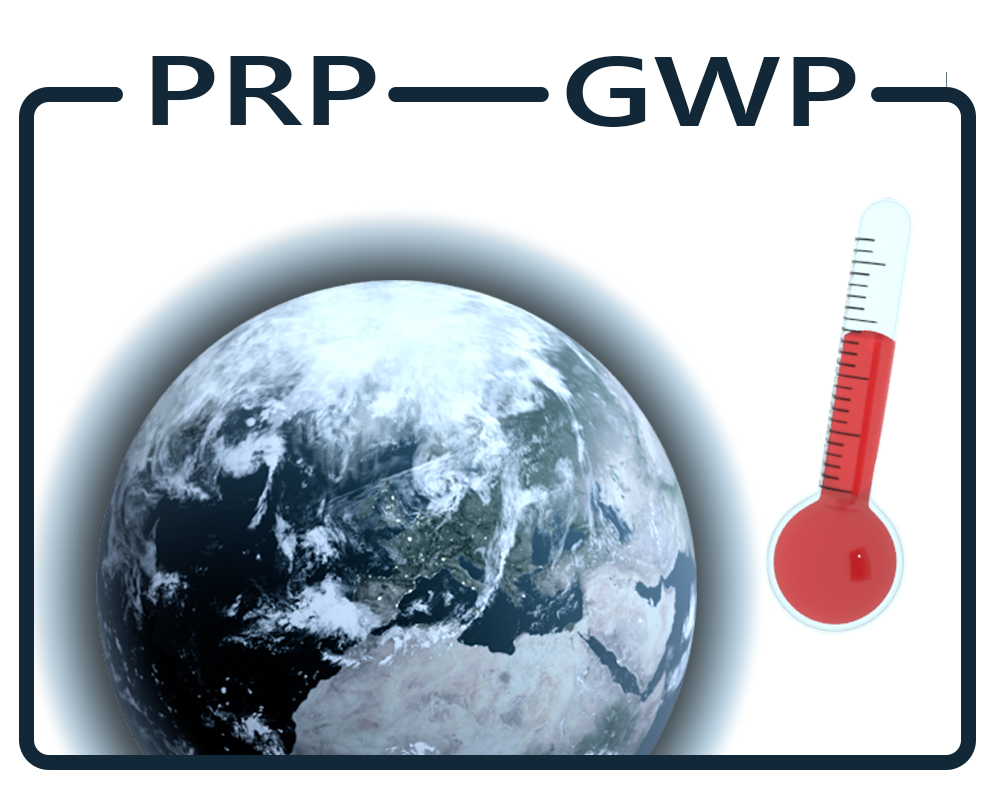
Regulation EU 517/2014 of 04/16/2014 on fluorinated greenhouse gases (F-Gas Directive) prohibits the use and discharge into the atmosphere of gases having a global warming potential GWP greater than 150.
This ban is in effect.
COP 22 has decided to soon ban all HFCs, including HFC 152 A. We guarantee that our aerosols are without GWP propellant gas.
__________________________________________________
BIOACCUMULATION Bioconcentration
Bioaccumulation of industrial degreasing solvents
Bioaccumulation or bioconcentration means the capacity of organisms, including animals (crustaceans), to absorb and concentrate certain chemicals in all or in part of their organism.
It therefore differs from biodegradation but is a contributing factor. The lower the bioaccumulation, the faster the biodegradation.
ASTM E 1688 standard defines bioaccumulation in sediments.
In eco-toxicology, the measurement of the Log KOW (log P), i.e. the n.octanol/water partition index, is a reference.
It accounts for the tendency of a molecule to accumulate in the biological membranes of living organisms; if high, the risk of bioaccumulation is high.
A solvent with a log KOW lower than 3 will be considered as weakly bio accumulative.
The measurement of log P is also used to define the persistence of drugs, including anaesthetics, for humans.
__________________________________________________
OZONIC DEPLETION POTENTIAL
(PDO ODP)
Ozone depletion potential (ODP) of solvents and degreasers for professional use
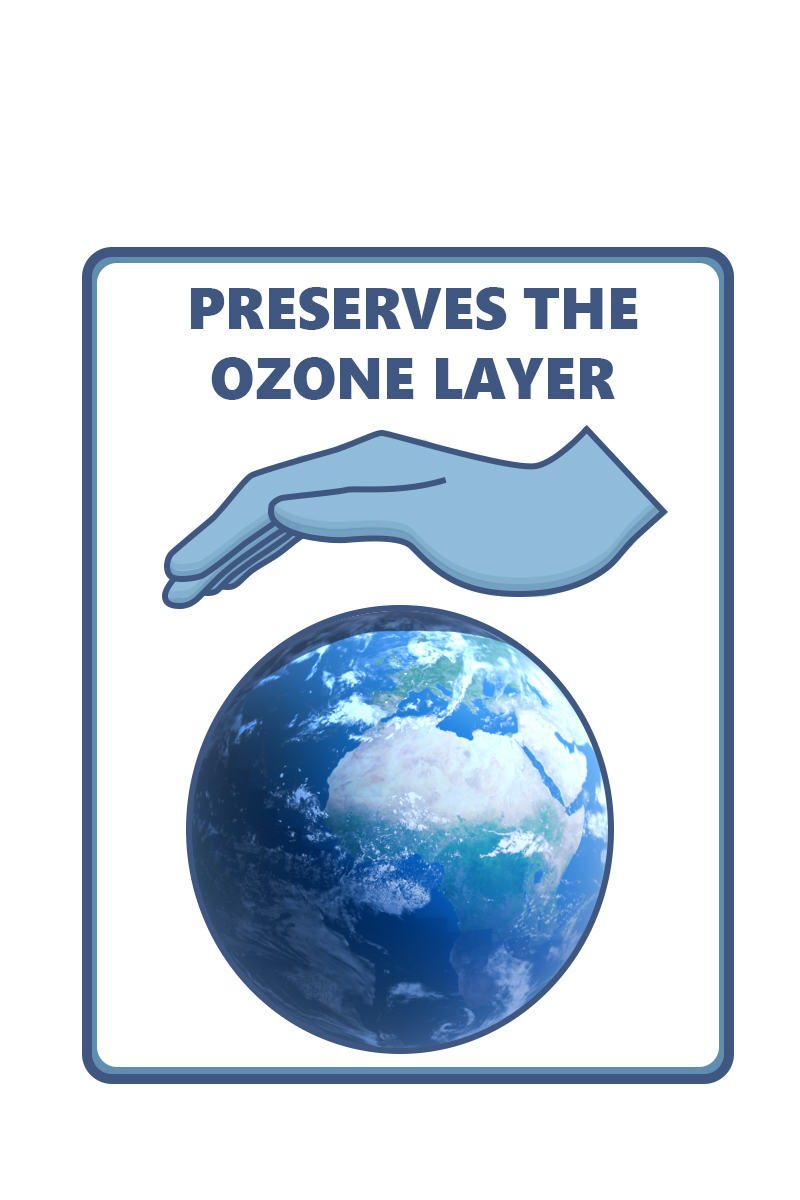
The ozone depletion potential of a solvent or gas is the degradation that a compound inflicts to the ozone layer in the upper atmosphere.
While halogenated alkanes such as CFCs, or certain HCFCs have been banned for many years, degreasing solvents may still contain n.bromo propane, (n.propyl bromide- nPB) used pure in vapour degreasing, or in mixture in cold degreasers. This compound has an ODP of 0.027 and therefore has not been banned. Reference R 11 or CFC 11 PDO = 1.
__________________________________________________
WATER AND SOIL POLLUTION
Risk of water and soil pollution from solvents and industrial degreasers
All industrial establishments that store, use, process or distribute chemicals that are dangerous in terms of flammability or toxicity are involved.
Pollution of water (water table, streams, sewer systems) or of soil can have at its origin a voluntary discharge, in particular in the event of an intrusion on a site, or an accidental discharge as the result of a material breakdown, a disaster by fire or by an explosion.
In the latter case, unfortunately the most common, different types of accidents are possible:
- A fire with release of toxic fumes and thermal radiation
- A UVCE Unconfined Vapour Cloud Explosion, an explosion of an unconfined cloud of flammable vapours
- A BLEVE Boiling Liquid Expanding Vapour Explosion, which usually concerns the explosion of a tank following an increase in temperature and pressure
- The BOLL OVER phenomenon that can occur when there is a film of water in a hydrocarbon storage tank and it is heated during heat radiation
- A DOMINO EFFECT disaster resulting in one or more other disasters
Water and soil pollution are therefore always highly likely after a disaster. If the establishment is subject to declaration or authorization, control by DREAL is then systematic.
DREAL is the Water Police. It is the guarantor of article L 210 of the environment code "Water is part of the common heritage of the nation". Decree 93-743 of March 29, 1993 established the nomenclature of all industrial operations and activities subject to declaration or authorization. The decree of May 11, 2015 called SEVESO III fixes the new reporting threshold at 1 ton of flammable liquid. (see the fire safety aspects section).
In the context of degreasing solvents, substances or preparations containing metalloid, heavy metal, certain hydrocarbon containing benzene or polycyclic aromatics, containing halogen (Chlorine, Fluoride, Bromine) are the most dangerous in terms of risk of water and soil pollution.
Regarding soil pollution, whatever its origin or reason, the regulations are simple and are established on the basis that " polluters are payers". However, if soil analysis is extremely easy to facilitate by current analytical means, the costs of soil clean-up can prove to be onerous.
30,000 inspections are regularly carried out each year in France. DDT, water agencies, ONEMA, and constabulary and mayors, are responsible to identify violations.
__________________________________________________
INDUSTRIAL WASTE
Industrial waste management obligations
Solvents and degreasers for professional use
The framework Directive of the Ministry of the Environment 2008/98 / EC sets the main objectives as well as the prioritization of actions, in terms of industrial waste
- Waste prevention
- Reuse
- Recycling
- Recovery
- Elimination (incineration)
- Ultimate waste management
“Each producer or holder of industrial waste is legally responsible for its waste, the conditions under which it is collected, transported, eliminated or recycled. This is the principle of producer or holder responsibility, who must be able to justify the final destination of its waste, and the method of disposal. "
The classification of industrial waste is subject of a nomenclature (6-digit code) included in the environmental code R 541-7 to R 541-11 and annexes R 541-8
This nomenclature has been updated to be in harmony with CLP regulations, and has been applicable since June 1, 2015.
The CLP regulation defines a hazard class for a substance, a preparation, and for a waste, which depends on all the products that constitute this waste. If the product is classified as hazardous, the waste is also classified in the same way, and entails the obligation to issue a WMF Waste Monitoring Form. The waste must then be picked up by an approved centre.
The ICPE classification for industrial waste is different.
Heading 4000 relating to storage and the quantity stored
Heading 3000 relating to waste itself (FDI headings)
Heading 2700 relating to activities
Industrial waste generated using solvents, degreasers and cleaning agents are included in the classifications
070 101 water-based cleaning agents
070 103 halogenated solvents (chlorine, bromine, fluorine)
070 104 non-halogen solvents
160 504 pressure containers (aerosols) having contained solvents or degreasers or cleaning agents
__________________________________________________
AEROSOLS PROPELLERS
Special case of solvents packaged in aerosols
Pressurized containers
The environmental aspects of solvents for the use of degreasers, cleaning agents, particle removers, decontaminants, brake cleaners, blowers presented and used in aerosols, must also consider the propellants they contain.
LIQUEFIED GASES FOR AEROSOLS
Isobutane
Isobutane is still widely used, given its boiling point at -11.7°C, to butane propane. For example, there are no more gas aerosols for portable camping stoves. The Butagaz aerosol packaged in Korea has disappeared from our stores.
Butane Propane
Propane has a boiling point of -44°C, so it is always offered as a mixture with Butane whose boiling point is 0°C.
Advantages: available, inexpensive (the BP mixture is an LPG specially deodorized for this application),
Large gas reserve in aerosols, good solubility in most products, low internal pressure of 2.5 bars allowing the use of 12 bar containers at low cost.
Extremely low active product/propellant ratio.
Disadvantages: Flash point -58°C extremely flammable.
Recognized as volatile organic compound (VOC).
Storage in limited quantity. New SEVESO 3 regulations,
ICPE sections 4320/4321.
Ban of storage in GMS or GSB. Future regulations to come for specialized PS.
Insurance premiums overrated as the primary cause of fire damage (mostly related to handling).
Butane Propane also presents pathological risks from a toxicological point of view; its penetration into the body is likely producing, by reaction with proteins or nucleic acids, various toxic metabolites which can spread in human organs.
CFC/HCFC/HFC
The ban on the production of CFCs was imposed in 1995.
The ban on HCFCs was more gradual starting in 2007 for HCFCs with a low ODP but a high GWP.
These gases have been naturally replaced by HFCs and mainly by HFC 134 A, with a boiling point -25°C, and above all non-flammable.
Regulation EU 517/2014 of 16/04/2014 relating to fluorinated greenhouse gases (F.Gas Reglement) prohibits the release into the atmosphere of fluorinated gases having a GWP greater than 150. This is the case for HFC 134 A.
This Prohibition has been applicable since January 1, 2018.
The aerosol packagers naturally turned to HFC 152 A with a GWP of 124, therefore less than 150. Although HFC 152 A is extremely flammable at -50°C, its boiling point at -25°C is strictly equivalent to HFC 134 A and did not require "reformulating" the products.
This solution should not last. Indeed, the parties (197 countries) of the Montreal Protocol (1987) which have just met recently in July 2016 in Vienna, will be defining the deadline for the end of all HFCs.
COP 22 decided to ban all HFCs, including HFC 152 A and all those with global warming potential, in the near future. This agreement has been signed by 197 countries (the GWP of an HFC being 14,000 times more harmful than Co2). Reference UNFCCC COP 22.
The recent choice, taken up by certain aerosol packagers to offer an alternative to HFC 134 A with HFC 152 A is therefore not permanent.
HF0
A 4th generation of fluorinated gases appears: hydrofluoroolefin under the name R 1234 ze. This liquefied gas has a 0DP of 0 and a negligible GWP for a boiling point similar to HFC 134 a (-19°C).
Its current cost is particularly high but should evolve if it is generalized as a refrigerant in air conditioning systems, and in polyurethane foam.
DME
Dimethyl ether or methoxy methane has been somewhat abandoned by custom aerosol packagers. With a boiling point of -24°C and a flash point of -41°C, it is not a cost-effective replacement for butane propane. However, it has a remarkable solvent power, a large gas reserve, and an excellent solubility in water.
Methoxymethane (DME) is still widely used in cosmetics: hair sprays, styling gels, shaving creams.
DME has been around for a very long time, the very well-known aerosols from Start Pilot contain only DME.
Since DME is an isomer of ethanol, large quantities from biomass could become available in the coming years and would therefore be an attractive bio-sourced propellant.
COMPRESSED GASES FOR AEROSOLS
CO2
CO2 or carbon dioxide is the ideal gas, as it comes from natural sources. CO2, also known as R 744 in refrigeration, is an atmospheric gas, therefore available in the air, as are Argon, Helium, Oxygen and Nitrogen. CO2 has also served as a benchmark for establishing the potential for global warming
(GWP) for other gas. Example Co2 PRP = 1 - HFC 134a PRP = 1430
The CO2 resulting from photosynthesis, from its origin of life on earth, is available in underground layers. This non-flammable, non-explosive, non-combustible, inert, dietary, medical, bacteriostatic compressed gas has only one defect, it is hardly miscible in most packaged products if their viscosity is high.
In traditional gassing techniques by Impact Gazing, the pressure required would be too great and would deform the containers.
Advantages: non-flammable, non-explosive, non-combustible
Propellant authorized for agro-food applications (Co2 is used for the gasification of carbonated drinks, as well as for blanketing and bacteriostatic protection of vacuum foods).
Disadvantages: Co2 is incompatible in pressurized containers, with water or traces of water.
Advantage or Disadvantage: The marketing choice; compressed gases enter only in a very small percentage in an aerosol, and consequently leaves a very high quantity of product. This can be an advantage or a disadvantage in terms of final price.
N2O NITROGEN PROTOXIDE
Nitrous oxide is widely used in the medical environment.
Used as an aerosol propellant, unlike CO2, it is partially soluble in water, which allows to generalize its application in water-base formulations, whipped cream, detergents, etc.
Non-flammable gas, it is oxidizing in its pure state, but not in the presence of water.
N2O has a GWP (global warming potential) 298 times greater than Co2, but given the very small percentage of compressed gases used in aerosols (2 to 3%), the long-term impact is negligible (especially if it is compared to Butane Propane which has a GWP 300,000 times more harmful than CO2).
NITROGEN N
Nitrogen, like naturally occurring carbon dioxide, is an environmentally friendly gas.
It represents 78.06% by volume of the air around us.
Nitrogen is produced by liquefaction of air.
Compressed, non-flammable, inert gas, it nevertheless requires, given its extremely low boiling point -195°C, adapted equipment, notably for food packaging machines.
The use of Nitrogen is common in the production of very large series such as for sprayers, hair sprays, it is a perfect gas for water-based formulations with a high percentage of active ingredients, if it is packaged in Gazer Shaker.
